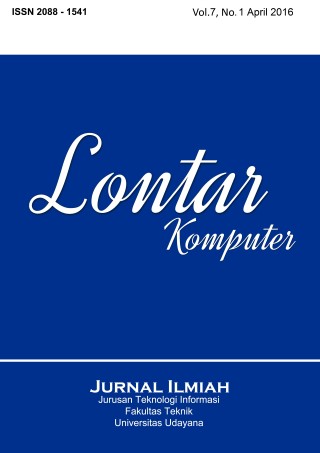Deteksi Batik Parang Menggunakan Fitur Co-Occurence Matrix Dan Geometric Moment Invariant Dengan Klasifikasi KNN
Abstract
Batik motifs are the base or the blueprint of batik patterns which serve as the core of the batik image design, and therefore the meaning of a sign, symbol or logo in a batik work can be revealed through its motifs. Visual identification requires visual skills and knowledge in classifying patterns formed in a batik image. Lack of media providing information on batik motifs makes the public unable to have sufficient information about batik motifs. Looking at this phenomenon, this study is conducted in order to perform visual identification using a computer that can assist and facilitate in identifying the types of batik. The methods used for batik image recognition are the Co-occurrence Matrix method to provide extraction of batik texture features, and the Geometric Moment Invariant method, while K Nearest Neighbor is used to classify batik images. The results on the accuracy values obtained reveal that the of 80%, compared to the accuracy value result using the Co-occurrence Matrix method that is 70%.
Downloads
References
[2] D. Putra, Pengolahan Citra Digital. Yogyakarta: Andi, 2010.
[3] T. Sergios, Pattern Recognition Second Edition. USA: Academic Press An Imprint Of Elsevier, 2003.
[4] A. Winarni, I. K. G. D. Putra, N. Ary, and E. Dewi, “Ekstraksi Ciri Warna dan Tekstur Untuk Temu Kembali Citra Batik,” 2012.
Keywords
The Authors submitting a manuscript do so on the understanding that if accepted for publication, the copyright of the article shall be assigned to Jurnal Lontar Komputer as the publisher of the journal. Copyright encompasses exclusive rights to reproduce and deliver the article in all forms and media, as well as translations. The reproduction of any part of this journal (printed or online) will be allowed only with written permission from Jurnal Lontar Komputer. The Editorial Board of Jurnal Lontar Komputer makes every effort to ensure that no wrong or misleading data, opinions, or statements be published in the journal.
 This work is licensed under a Creative Commons Attribution 4.0 International License.
This work is licensed under a Creative Commons Attribution 4.0 International License.























